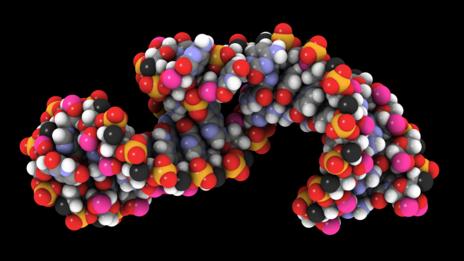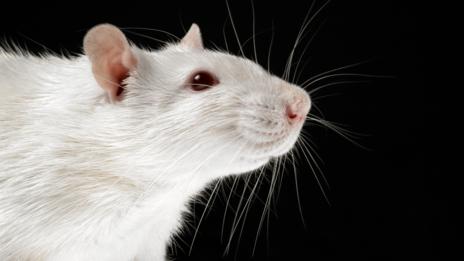
(Thinkstock)
Can meditation really slow down the effects of age? One Nobel Prize-winner is finding the scientific in the spiritual, writes Jo Marchant.
It’s seven in the morning on the beach in Santa Monica, California. The low sun glints off the waves and the clouds are still golden from the dawn. The view stretches out over thousands of miles of Pacific Ocean. In the distance, white villas of wealthy Los Angeles residents dot the Hollywood hills. Here by the shore, curlews and sandpipers cluster on the damp sand. A few metres back from the water’s edge, a handful of people sit cross-legged: members of a local Buddhist centre about to begin an hour-long silent meditation.
Such spiritual practices may seem a world away from biomedical research, with its focus on molecular processes and repeatable results. Yet just up the coast, at the University of California, San Francisco (UCSF), a team led by a Nobel Prize-winning biochemist is charging into territory where few mainstream scientists would dare to tread. Whereas Western biomedicine has traditionally shunned the study of personal experiences and emotions in relation to physical health, these scientists are placing state of mind at the centre of their work. They are engaged in serious studies hinting that meditation might – as Eastern traditions have long claimed – slow ageing and lengthen life.

Can meditation put the brakes on biological erosion within our cells? (Thinkstock)
Elizabeth Blackburn has always been fascinated by how life works. Born in 1948, she grew up by the sea in a remote town in Tasmania, Australia, collecting ants from her garden and jellyfish from the beach. When she began her scientific career, she moved on to dissecting living systems molecule by molecule.
Working with biologist Joe Gall at Yale in the 1970s, Blackburn sequenced the chromosome tips of a single-celled freshwater creature calledTetrahymena (“pond scum”, as she describes it) and discovered a repeating DNA motif that acts as a protective cap. The caps, dubbed telomeres, were subsequently found on human chromosomes too. They shield the ends of our chromosomes each time our cells divide and the DNA is copied, but they wear down with each division. In the 1980s, working with graduate student Carol Greider at the University of California, Berkeley, Blackburn discovered an enzyme called telomerase that can protect and rebuild telomeres. Even so, our telomeres dwindle over time. And when they get too short, our cells start to malfunction and lose their ability to divide – a phenomenon that is now recognised as a key process in ageing. This work ultimately won Blackburn the Nobel Prize in Physiology or Medicine.
In 2000, she received a visit that changed the course of her research. The caller was Elissa Epel, a postdoc from UCSF’s psychiatry department. Psychiatrists and biochemists don’t usually have much to talk about, but Epel was interested in the damage done to the body by chronic stress, and she had a radical proposal.
Epel, now director of the Aging, Metabolism and Emotion Center at UCSF, has a long-standing interest in how the mind and body relate. Her work, she says, is influenced by the holistic health guru Deepak Chopra, and the pioneering biologist Hans Selye, who first described in the 1930s how stressed rats can become chronically ill. “Every stress leaves an indelible scar, and the organism pays for its survival after a stressful situation by becoming a little older,” Selye said.
Back in 2000, Epel wanted to find that scar. “I was interested in the idea that if we look deep within cells we might be able to measure the wear and tear of stress and daily life,” she says. After reading about Blackburn’s work on ageing, she wondered if telomeres might fit the bill.
‘Another world’
With some trepidation, she asked Blackburn for help with a study of mothers going through one of the most stressful situations that she could think of – caring for a chronically ill child. Epel’s plan was to ask the women how stressed they felt, then look for a relationship between their state of mind and the state of their telomeres. Collaborators at the University of Utah would measure telomere length, while Blackburn’s team would measure levels of telomerase.
Blackburn’s research until this point had involved elegant, precisely controlled experiments in the lab. Epel’s work, on the other hand, was on real, complicated people living real, complicated lives. “It was another world as far as I was concerned,” says Blackburn. At first, she was doubtful that it would be possible to see any meaningful connection between stress and telomeres. Genes were seen as by far the most important factor determining telomere length, and the idea that it would be possible to measure environmental influences, let alone psychological ones, was highly controversial. But as a mother herself, Blackburn was drawn to the idea of studying the plight of these stressed women. “You can’t help but empathise.”
It took four years before they were finally ready to collect blood samples from 58 women; this was a small pilot study. To give the highest chance of a meaningful result, the women in the two groups – stressed mothers and controls – had to match as closely as possible, with similar ages, lifestyles and backgrounds. Epel recruited her subjects with meticulous care. Still, Blackburn says, she saw the trial as nothing more than a feasibility exercise. Right up until Epel called her and said, “You won’t believe it.”

Eastern religions such as Buddhism have long advocated the health benefits of meditation, but Western medicine has been less welcoming (Getty Images)
The results were crystal clear. The more stressed the mothers said they were, the shorter their telomeres and the lower their levels of telomerase.
The most frazzled women in the study had telomeres that translated into an extra decade or so of ageing compared to those who were least stressed, while their telomerase levels were halved. “I was thrilled,” says Blackburn. She and Epel had connected real lives and experiences to the molecular mechanics inside cells. It was the first indication that feeling stressed doesn’t just damage our health – it literally ages us.
Unexpected discoveries naturally meet scepticism. Blackburn and Epel struggled initially to publish their boundary-crossing paper. “Science [one of the world’s leading scientific journals] couldn’t bounce it back fast enough!” chuckles Blackburn.
Research explosion
When the paper finally was published, in the Proceedings of the National Academy of Sciences in December 2004, it sparked widespread press coverage as well as praise. Robert Sapolsky, a pioneering stress researcher at Stanford University and author of the bestselling Why Zebras Don’t Get Ulcers, described the collaboration as “a leap across a vast interdisciplinary canyon”. Mike Irwin, director of the Cousins Center for Psychoneuroimmunology at the University of California, Los Angeles, says it took a lot of courage for Epel to seek out Blackburn. “And a lot of courage for Liz [Blackburn] to say yes.”
Many telomere researchers were wary at first. They pointed out that the study was small, and questioned the accuracy of the telomere length test used. “This was a risky idea back then, and in some people’s eyes unlikely,” explains Epel. “Everyone is born with very different telomere lengths and to think that we can measure something psychological or behavioural, not genetic, and have that predict the length of our telomeres? This is really not where this field was 10 years ago.”
The paper triggered an explosion of research. Researchers have since linked perceived stress to shorter telomeres in healthy women as well as in Alzheimer’s caregivers, victims of domestic abuse and early-life trauma, and people with major depression and post-traumatic stress disorder. “Ten years on, there’s no question in my mind that the environment has some consequence on telomere length,” says Mary Armanios, a clinician and geneticist at Johns Hopkins School of Medicine who studies telomere disorders.

Telomeres help protect the ends of our chromosomes, but they wear down each time a cell is divided (Science Photo Library)
There is also progress towards a mechanism. Lab studies show that the stress hormone cortisol reduces the activity of telomerase, while oxidative stress and inflammation – the physiological fallout of psychological stress – appear to erode telomeres directly.
This seems to have devastating consequences for our health. Age-related conditions from osteoarthritis, diabetes and obesity to heart disease, Alzheimer’s and stroke have all been linked to short telomeres.
In the decade since Blackburn and Epel’s original study, the idea that stress ages us by eroding our telomeres has also permeated popular culture. In addition to Blackburn’s many scientific accolades, she was named one of Time magazine’s “100 most influential people in the world” in 2007, and received a Good Housekeeping achievement award in 2011. A workaholic character played by Cameron Diaz even described the concept in the 2006 Hollywood film The Holiday. “It resonates,” says Blackburn.
But as evidence of the damage caused by dwindling telomeres piles up, she is embarking on a new question: how to protect them.
Reducing stress
“Ten years ago, if you’d told me that I would be seriously thinking about meditation, I would have said one of us is loco,” she told the New York Times in 2007. Since her initial study with Epel, the pair have become involved in collaborations with teams around the world – as many as 50 or 60, Blackburn estimates, spinning in “wonderful directions”. Many of these focus on ways to protect telomeres from the effects of stress; trials suggest that exercise, eating healthily and social support all help. But one of the most effective interventions, apparently capable of slowing the erosion of telomeres – and perhaps even lengthening them again – is meditation.
So far the studies are small, but they all tentatively point in the same direction. In one ambitious project, Blackburn and her colleagues sent participants to meditate at the Shambhala mountain retreat in northern Colorado. Those who completed a three-month-long course had 30% higher levels of telomerase than a similar group on a waiting list. A pilot study of dementia caregivers, carried out with UCLA’s Irwin and published in 2013, found that volunteers who did an ancient chanting meditation called Kirtan Kriya, 12 minutes a day for eight weeks, had significantly higher telomerase activity than a control group who listened to relaxing music. And a collaboration with UCSF physician and self-help guru Dean Ornish, also published in 2013, found that men with low-risk prostate cancer who undertook comprehensive lifestyle changes, including meditation, kept their telomerase activity higher than similar men in a control group and had slightly longer telomeres after five years.

Telomerase is an enzyme that helps repair damaged telomeres (Science Photo Library)
Theories differ as to how meditation might boost telomeres and telomerase, but most likely it reduces stress. The practice involves slow, regular breathing, which may relax us physically by calming the fight-or-flight response. It probably has a psychological stress-busting effect too. Being able to step back from negative or stressful thoughts may allow us to realise that these are not necessarily accurate reflections of reality but passing, ephemeral events. It also helps us to appreciate the present instead of continually worrying about the past or planning for the future.
“Being present in your activities and in your interactions is precious, and it’s rare these days with all of the multitasking we do,” says Epel. “I do think that in general we’ve got a society with scattered attention, particularly when people are highly stressed and don’t have the resources to just be present wherever they are.”
Inevitably, when a Nobel Prize-winner starts talking about meditation, it ruffles a few feathers. In general, Blackburn’s methodological approach to the topic has earned a grudging admiration, even among those who have expressed concern about the health claims made for alternative medicine. “She goes about her business in a cautious and systematic fashion,” says Edzard Ernst of the University of Exeter, UK, who specialises in testing complementary therapies in rigorous controlled trials. Oncologist James Coyne of the University of Pennsylvania, Philadelphia, who is sceptical of this field in general and describes some of the research on positive psychology and health as “morally offensive” and “tooth fairy science”, concedes that some of Blackburn’s data is “promising”.
‘Easy to be led astray’
Others aren’t so impressed. Surgeon-oncologist David Gorski is a well-known critic of alternative medicine and pseudoscience who blogs under the name of Orac – he’s previously described Blackburn’s collaborator Dean Ornish as “one of the four horsemen of the Woo-pocalypse”. Gorski stops short of pronouncing meditation as off-limits for scientific inquiry, but expresses concern that the preliminary results of these studies are being oversold. How can you be sure you’re investigating it rigorously? “It’s really hard to do with these things,” he says. “It is easy to be led astray. Nobel Prize-winners are not infallible.” Blackburn’s own biochemistry community also seems ambivalent about her interest in meditation. Three senior telomere researchers I contacted declined to discuss this aspect of her work, with one explaining that he didn’t want to comment “on such a controversial issue”.
“People are very uncomfortable with the concept of meditation,” notes Blackburn. She attributes this to its unfamiliarity and its association with spiritual and religious practices. “We’re always trying to say it as carefully as we can… always saying, ‘look, it’s preliminary, it’s a pilot’. But people won’t even read those words. They’ll see the newspaper headings and panic.”
Any connotation of religious or paranormal beliefs makes many scientists uneasy, says Chris French, a psychologist at Goldsmiths, University of London, who studies anomalous experiences including altered states of consciousness. “There are a lot of raised eyebrows, even though I’ve got the word sceptic virtually tattooed across my forehead,” he says. “It smacks of new-age woolly ideas for some people. There’s a kneejerk dismissive response of ‘we all know it’s nonsense, why are you wasting your time?’”

Experiments on rats found that the more stress they suffered, the shorter their lives (Science Photo Library)
The tide is now turning. Helped in part by money from the National Institute of Health (NIH), researchers have developed secularised – or non-religious – practices such as mindfulness-based stress reduction and mindfulness-based cognitive therapy, and reported a range of health effects from lowering blood pressure and boosting immune responses to warding off depression. And the past few years have seen a spurt of neuroscience studies showing that even short courses of meditation can forge structural changes in the brain.
Blackburn’s view is that meditation is a fair topic to study, as long as robust methods are used. So when her research first pointed in this direction, she was undaunted by concerns about what such studies might do to her reputation. Instead, she tried it out for herself, on an intensive six-day retreat in Santa Barbara. “I loved it,” she says. She still uses short bursts of meditation, which she says sharpen her mind and help her to avoid a busy, distracted mode. She even began one recent paper with a quote from the Buddha: “The secret of health for both mind and body is not to mourn for the past, worry about the future, or anticipate troubles but to live in the present moment wisely and earnestly.”
In September 2006, she attended a conference held at the Menla Mountain Buddhist centre, a remote retreat in New York’s Catskill mountains, at which Western scientists met with Tibetan-trained scholars - including the Dalai Lama - to discuss longevity, regeneration and health. During the meeting, the spiritual leader honoured Blackburn’s scientific achievements by inducting her as a “Medicine Buddha”.
Alternative approach
If Epel’s psychiatry research had been another world, the conference delegates' Eastern philosophy seemed to Blackburn more alien still. Over dinner one evening, while explaining to the other delegates how errors in the gene for telomerase can cause health problems, she described genetic mutation as a random, chance event. That’s dogma for Western scientists but not for those trained in the Tibetan worldview. “They said ‘oh no, we don’t regard this as chance’,” says Blackburn. For these holistic scholars, even the smallest events were infused with meaning. “I suddenly thought, whoa, this is a very different world from the one I’m on.”
But instead of dismissing her Eastern counterparts, she was impressed. “They’re scholarly in a very different way, but it is still good-quality thinking,” she explains. “It wasn’t ‘God told me this’, it was more ‘let’s see what actually happens in the brain’. So there are certain elements of the approach that I am quite comfortable with as a scientist.”
Blackburn isn’t tempted to embrace the spiritual approach herself. “I’m rooted in the physical world,” she says. In general, Blackburn is more interested in how telomeres might help people directly, by encouraging them to live in a way that reduces their disease risk. “This is not a familiar model for the medical world,” she says.

Beachside meditation may have some surprising health benefits (Thinkstock)
Conventional medical tests give us our risk of particular conditions – high cholesterol warns of impending heart disease, for example, while high blood sugar predicts diabetes. Telomere length, by contrast, gives an overall reading of how healthy we are: our biological age. And although we already know that we should exercise, eat well and reduce stress, many of us fall short of these goals. Blackburn believes that putting a concrete number on how we are doing could provide a powerful incentive to change our behaviour. In fact, she and Epel have just completed a study (as yet unpublished) showing that simply being told their telomere length caused volunteers to live more healthily over the next year than a similar group who weren’t told.
Ultimately, however, the pair want entire countries and governments to start paying attention to telomeres. More and more evidence shows that the stress from social adversity and inequality is a major force eroding these protective caps. People who didn’t finish high school or are in an abusive relationship have shorter telomeres, for example, while studies have also shown links with low socioeconomic status, shift work, lousy neighbourhoods and environmental pollution. Children are particularly at risk: being abused or experiencing adversity early in life leaves people with shorter telomeres for the rest of their lives. And through telomeres, the stress that women experience during pregnancy affects the health of the next generation too, causing hardship and economic costs for decades to come.
Speaking out
In 2012, Blackburn and Epel wrote a commentary in the journal Nature, listing some of these results and calling on politicians to prioritise “societal stress reduction”. In particular, they argued, improving the education and health of women of child-bearing age could be “a highly effective way to prevent poor health filtering down through generations”. Meditation retreats or yoga classes might help those who can afford the time and expense, they pointed out. “But we are talking about broad socioeconomic policies to buffer the chronic stressors faced by so many.” Where many scientists refrain from discussing the political implications of their work, Blackburn says she wanted to speak out on behalf of women who lack support, and say “You’d better take their situations seriously.”

Embracing the fuzzier aspects of our minds may be part of delaying chronic conditions, research suggests (Thinkstock)
While arguments for tackling social inequality are hardly new, Blackburn says that telomeres allow us to quantify for the first time the health impact of stress and inequality and therefore the resulting economic costs. We can also now pinpoint pregnancy and early childhood as “imprinting periods” when telomere length is particularly susceptible to stress. Together, she says, this evidence makes a stronger case than ever before for governments to act.
But it seems that most scientists and politicians still aren’t ready to leap across the interdisciplinary canyon that Blackburn and Epel bridged a decade ago. The Nature article has engendered little response, according to a frustrated Epel. “It’s a strong statement so I would have thought that people would have criticised it or supported it,” says Blackburn. “Either way!”
“It’s now a consistent story that the ageing machinery is shaped at the earliest stages of life,” she insists. “If we ignore that and we just keep trying to put band-aids on later, we’re never going to get at prevention and we’re only going to fail at cure.” Simply responding to the physical symptoms of disease might make sense for treating an acute infection or fixing a broken leg, but to beat chronic age-related conditions such as diabetes, heart disease and dementia, we will need to embrace the fuzzy, subjective domain of the mind.
No comments:
Post a Comment